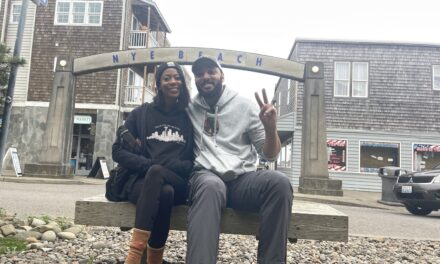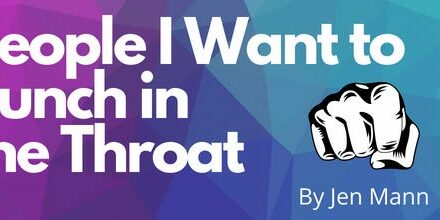
JULY 13, 2021
full tilt
Metrics Matter: Look at Analytics to Know What Your Audience Really Thinks About Your Content
Your numbers tell a lot.
They indicate how well you’re attracting an audience and getting them to do what you want. They indicate many of the strengths and weaknesses of your business – the content products, the promotion, the channels, the frequency, the timing, etc.
“The companies that are going to win are the ones who are using data, not guessing,” Neil Hoyne, Google’s chief measurement strategist, said at a Wharton symposium.
Yet, too often, content entrepreneurs fail to embrace the data side of their business. Some creatives even proudly claim “they don’t do numbers.” And that is why many content creators will never be successful content entrepreneurs.
The Tilt Advice
At the Wharton event, Poshmark’s Barkha Saxena explained they use a framework to integrate data into their process: Evaluate the data, execute the plan, learn what worked and what didn’t, then repeat. “This is pretty much how you turn the data into an operating tool,” she said.
Sounds simple, right? Get over any trepidation about numbers, open your platforms’ analytics tool, and retrieve the magical data to make your content business even greater.
But after you log in, you look at the screen and get overwhelmed. So many words and numbers. How do you know where to start?
Take a breath. You’ve got this. You don’t need to decipher every number available to you. Pick the three most important metrics contributing to your business goals. Let’s look at three broad categories – traffic, engagement, and conversions.
Traffic indicates people want to look at or hear your content. If you’re an early-stage business, you likely want to start here. Though the terms may differ – traffic, impressions, views – indicate how many people are seeing your content. With this data, you can understand how well your audience is interested in your content. Sure, you can look at a particular post or video, but it’s more helpful to look at traffic over time. Are your numbers steadily increasing? That’s great. (A sharp spike isn’t that helpful. It indicates a really popular piece of content that didn’t result in many returning visitors.)
Or do you see a dip or dropoff? A decline indicates what you’re doing isn’t working. It’s an indicator for further investigation.
Engagement analytics indicate if people are motivated by your content. These metrics include likes, follows, shares, comments, etc. In some cases, like Facebook, the platform will combine that data to calculate an engagement rate. These metrics can help you see if your content resonates so well with your audience that they want to share their thoughts (even if it’s just a thumbs-up emoji.)
Traffic and engagement metrics are where too many content creators mistakenly stop. Conversion metrics are what success content entrepreneurs closely examine. These indicate what your audience does after consuming your content – if they’re doing what you want them to do. It could be the number of YouTube viewers who subscribe to your channel or visit your podcast page. It could be the number who visit your website and sign up for your newsletter.
Traffic, engagement, and conversion metrics matter. Each represents a golden opportunity to learn about your audience and how they interact with your business and its products. You don’t need to look at every number, but you better pick the most informative for your business and look at them regularly.
– Ann Gynn
To see the most informative metrics on your digital channels, from social to the web, read the longer story.
YouTube Creator Andrea Russett Goes Pro Early
Entrepreneur & Biz: Andrea Russett
Tilt: Journey to real-life adulthood
Channels: TikTok (1.5M) YouTube (2.93M) Instagram (4.8M)
Rev Streams: TikTok, YouTube, Instagram, music, merch
Our Favorite Actionable Advice
- Not just the rosy: Andrea knows sharing her life means sharing the positive and the negative.
- Read contracts: A professional can be essential to ensuring you fully understand all the details in your brand sponsorships or other business contracts.
- Don’t go for sensational: Building a business around controversy may prompt follower spikes, but it rarely is the best long-term, sustainable option.
Some of the Story:
The 26-year-old YouTube creator posted her first video in 2009 as a fun pastime. Later, Andrea Russett realized she could make a profit and grew her career. Now, Andrea makes a living entirely from her content creation.
Now, the creator has turned her success into a music career and plans to release her first EP this year. Andrea just released a single titled Freezing and an adjacent music video with her unique spin on pop.
It all started on YouTube. Andrea, who grew up in Indiana, says she created fun videos with her friends as a way to beat boredom. As she’s grown as a person and a creator, though, Andrea has shown some of the harder moments in her life. She speaks openly about mental health and continues to grow her own following by offering a glimpse into her authentic life.
“The most rewarding part by far is being able to be that voice of honesty I wish I could have heard when I was younger,” she says. “I try to be as open and honest about my own mental health journey online in hopes that even just one person feels a little less alone.”
Early in her career, Andrea hired professionals to help her make money from her content. “I think the best advice I can give to anyone looking to do the same is to READ YOUR CONTRACTS! And surround yourself with a team you can trust,” she says.
Two years ago, Andrea sought a new challenge. “I finally got to a point in my career where I was doing things because they were placed in front of me, not because I was truly passionate about them,” she says. “I needed to feel that excitement. So I decided I would finally go for it. I started vocal lessons and writing sessions for an entire year and a half before ever releasing anything, just to make sure I did it right. And I’m so thankful I did.”
– Kelly Wynne
All the Story: To learn how Andrea approaches her content creation schedule and why she no longer believes online controversies are the way to build sustainable audiences, check out the longer story.
quick talk
Caught on … Twitter
“The Creator Economy is one of the only mechanisms in our society that allows introverts and outcast(s) to shine … while not insisting that extroverts and the mainstream cease to exist.” – Roberto Blake
things to know
Money
-
Busking online: Singer Liv Harland says she may only have 30 people watch her sing on the streets of Leeds (England), but tens of thousands watch her busking livestreams on TikTok. She makes three times as much money online compared to the street. (BBC; h/t Ian Truscott)
Tilt Take: We like Liv’s style – she takes her in-person performances to TikTok at the same time. It’s a nice change of pace to the in-the-house studios. -
Know your CAC and LTV: You may invest in paid promos or ads to attract new audiences. To do that effectively, understand your customer acquisition cost (CAC) and lifetime value (LTV) of an audience member. (CreatorScape; h/t Corrale Cachola)
Tilt Take: Content creators become entrepreneurs when they put on their business owner’s hat. That includes knowing your marketing-related numbers like CAC and LTV.
Audiences
-
Cultivate a community: “There is no choice between building an audience or a community. Creators that want to remain relevant need to be doing both.” (Yang’s Newsletter)
Tilt Take: It’s worth making the point – audiences and communities are not the same thing. An audience is mostly static, but a community is engaged with each other and the creator (and that’s even better). -
Be available: Don’t take a chance that people will find answers through search engine results. Invite them to ask and be ready to respond on your channels. (Forbes)
Tilt Take: Personally answering questions and responding to audience questions can make a bigger impact than a simple transactional answer.
Tech and Tools
-
Copycat: Instagram is still one of the most popular but not the fastest-growing platform. That trophy belongs to TikTok. “And Instagram is, not surprisingly, desperate to copy everything they do.” (An Injustice!)
Tilt Take: It’s harder to find a social platform that keeps its original tilt. Stop trying. Instead, figure out where your audience is – or where they’re responding well to your content – and stick with it (as you grow your owned platform too.) -
No die or Black: TikTok flagged Ziggi Tyler’s Creator Marketplace bio for attempting to use words like “audience” (it has the word “die” in it), Black and Black Lives Matter (possible hate speech.) (Forbes)
Tilt Take: TikTok says it’s looking into the problems with its algorithm. We wish they would have thought like people before Ziggi (and others) ran into the problem.
And Finally
-
Scattered newsletters: “To be successful, and before it can offer brand partners an audience, the (Facebook) Bulletin rollout will have to build that audience by providing something they cannot find elsewhere – and there are many, many email newsletters on the market, most far more tailored to niche audiences and perspectives than the mainstream considerations of Facebook will likely be able to afford.” (MIDia Research)
Tilt Take: We saw this comment in an interesting New York Times piece about the impact of so many newsletter platforms. This quote makes sense: Facebook may be too mainstream for the niche audiences most newsletters serve. -
Netflix and podcasts: Netflix hired its first head of podcasts. While most of the shows will relate to Netflix series and films, they also will work with creators outside the brand. (Forbes)
Tilt Take: Another indicator audio content is a growth market.
we’re a stan for The Mom Trotter
Karen and Sylvester Akpan sold their home and took to the RV life with their elementary-school-age son Aiden. Their income? Karen’s blog turned content business, The Mom Trotter, where she shares their RV life story, including budget travel tips, homeschooling ideas, etc.
Though they made the decision for freedom, they ended up making a good living (and the three of them are now W-2 employees of their own S corp.) She also earns an income from creating ad campaigns for brands like Camping World, Hilton Hotels, and Disney, according to CNBC. In its interview with the family, they netted $81K in 2020 and an expectation to double that this year, mostly from Instagram campaigns.
“There’s no way we’re going back to a house or careers or anything like that,” Karen tells CNBC. “We love the freedom that working for ourselves, being entrepreneurs, has given us.”
Why we’re a Stan: The Akpans sold their house because they wanted to reduce their expenses and spend more time traveling. Through that, they found they could make a good living by creating content. And they are smart to treat it like the business it is, complete with incorporating and paying each contributor (i.e., each family member) as an employee.
the tilt shout-out
Are you building a sustainable, audience-first media company? Curious about what other media companies are doing? A Media Operator is a 2x per week newsletter that digs into business strategies for successful digital media companies. Subscribe now.
the business of content
In this week’s Content Inc. podcast, Joe discusses so much of what we do as content creators, content entrepreneurs, and marketers is based on what people have done in the past. This is not the correct way to think, listen now to learn why.
In the latest This Old Marketing, the boys place their bets on TikTok driving the creator economy.
the tilt team
Your team for this issue: Joe Pulizzi, Ann Gynn, Laura Kozak, and Dave Anthony, with an assist from Kelly Wynne and Don Borger.
Get more of the Full Tilt stories on TheTilt.com.
Know a content creator who’s going full tilt? DM us or email [email protected]
Was this email forwarded to you? Get your own sub here.
Copyright ©2021 Tilt Media LLC All rights reserved.
Unsubscribe | Update your profile | 17040 Amber Drive, Cleveland, OH 44111





